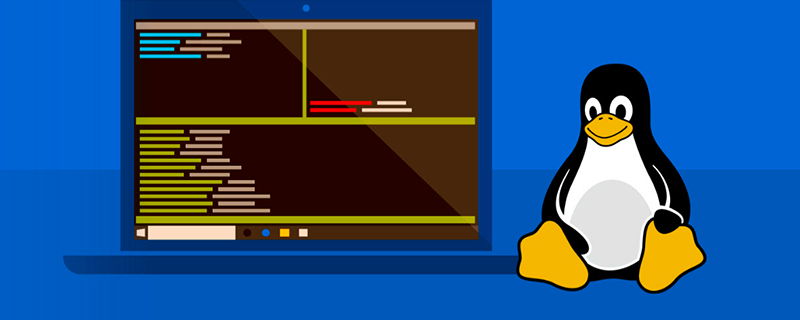

How to uninstall apache in linux?
Method 1
Code As follows:
1.
root@server ~]# rpm -qa|grep httpd httpd-2.2.3-11.el5_2.centos.4 httpd-manual-2.2.3-11.el5_2.centos.4
Explanation: The rpm –qa | grep httpd command is to list all httpd related packages,
My example above It is the default rpm package list of Apache installed by Linux. If it is another Linux version, the list may be different, but don’t worry, no matter what it is, uninstallation will start from the bottom package until the first package is uninstalled. So far.
Recommended: [Linux Video Tutorial]
For example: In this example, we should uninstall httpd-manual-2.2.3-11.el5_2.centos first. 4. The method is as follows:
The code is as follows:
rpm –e httpd-manual-2.2.3-11.el5_2.centos.4
(generally there is no need to include a version number, for example, it can be written directly as rpm –e httpd-manual)
The code is as follows:
rpm –e httpd --nodeps
The uninstallation method of php and mysql is the same as the uninstallation of apache.
Note: If it cannot be uninstalled during uninstallation, the system will generally prompt the dependencies of the package and list the names of the dependent packages. Just uninstall the packages that prompt the dependencies first.
If there are packages that cannot be uninstalled, you can add the --nodeps parameter to uninstall them. For example, if we uninstall httpd-manual-2.2.3-11.el5_2.centos.4, it cannot be uninstalled.
Just use:
[root@localhost ~]# rpm -e httpd-manual-2.2.3-11.el5_2.centos.4 --nodeps
Method 2
The code is as follows:
Uninstall command apache
sudo apt-get remove apache
Uninstall association
sudo apt-get autoremove
Manually delete configuration
sudo find /usr -name “*apache*” -exec rm -rf {} ;
sudo find /etc -name “*apache*” -exec rm -rf {} ;
sudo find /var -name “*apache*” -exec rm -rf {} ;Similarly, this method can also be used to uninstall other software.
Explanation: The rpm –qa | grep httpd command is to list all apache-related packages. My example above is the rpm package list of apache installed by default on Linux AS4
说明:rpm –e 是卸载rpm包的命令,后面是包名称,最后的版本号是不用打的. rpm –e xxxx
Note: If it cannot be uninstalled during uninstallation, the system will generally prompt you for the dependencies of the package and list the names of the dependent packages. Just uninstall the packages that prompt you for dependencies.
If there are packages that cannot be uninstalled, you can add the --nodeps parameter to uninstall them. For example, if we uninstall php-4.3.9-3.15, it cannot be uninstalled.
For example
View source code print help
rpm -e xxx --nodeps
Note there are 2
Explanation: RPM (RedHat Packge Manager) is produced by RedHat company Software package manager, you can use it to easily install, upgrade, uninstall, verify, query and other operations on rpm-form software packages. The installation is simple, and when uninstalling, you can also delete files installed in multiple directories. It is clean, so it is recommended for beginners to use rpm-form packages whenever possible.
In the parameters of rpm, -i means installation, -v means verification, -h uses hash characters to display the installation progress, *.rpm is the file name of the software package (*.rpm here specifically refers to * Files with the suffix rpm other than .src.rpm); the parameter -e is to delete the software package, and packagename is the name of the software package, which is different from the file name of the software package. It is often the character in front of the version number in the file name. Strings, for example, apache-3.1.12-i386.rpm and apache-devel-3.1.12-i386.rpm are software package file names, and their package names are apache and apache-devel respectively. For more rpm parameters, please refer to the manual page: man rpm.
If you don’t like to install or uninstall these software packages in the character interface, you can use a graphical interface package management program under X-Window, such as glint, xrpm, or KDE kpackge, etc., so that the installation, upgrade, uninstallation, verification and query of software packages can be easily completed by clicking the mouse.
2. Binary software package in the form of *.tar.gz/*.tgz, *.bz2
Installation: tar zxvf *.tar.gz or tar yxvf *.bz2
Uninstall: Manual deletion
Note: The binary software package in the form of *.tar.gz/*.bz2 is packaged with the tar tool and compressed with gzip/bzip2. Install Just unpack it directly. For software that only has a single directory after decompression, use the command "rm -rf software directory name" when uninstalling; if the files after decompression are scattered in multiple directories, you must manually delete them one by one (a little troublesome). I want to know how to ask the system when decompressing. Which files are installed in, you can use the command "tar ztvf *.tar.gz"/"tar ytvf *.bz2" to get the list. The parameter z of tar is to call gzip to decompress, x is to unpack, v is to verify, f is to display the result, y is to call bzip2 to decompress, and t is to list the files of the package. For more parameters, see the man page: man tar.
The above is the detailed content of How to uninstall apache in linux. For more information, please follow other related articles on the PHP Chinese website!